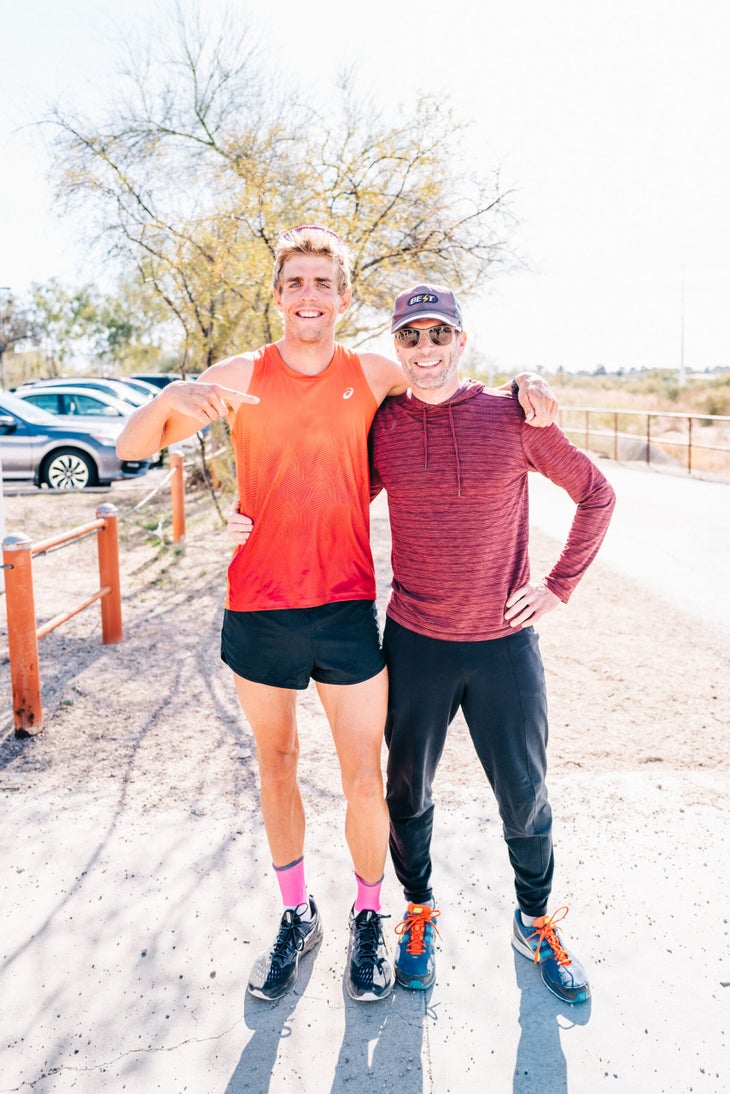New perk! Get after it with local recommendations just for you. Discover nearby events, routes out your door, and hidden gems when you sign up for the Local Running Drop.
He’s one of the most exciting talents on the long-course scene, so when Sam Long announced that he won’t be racing the Ironman World Championship in Kona this year—arguably the biggest race of the season—it understandably turned heads. The pursuit of the coveted title of Ironman world champion is one that has fueled countless dreams and broken many hearts (and bodies), but it’s rare (although not unheard of) for an athlete to purposely opt out. However, with this year featuring not one, but two, Ironman World Championship races (St. George in May and Kona in October), as well as 70.3 Worlds in St. George just three weeks after Kona (Oct. 28-29), it’s perhaps not surprising that Long has made the decision he has. For him, it comes down to an interesting blend of physiological, financial, and strategic reasons, which, he said, he hopes will deliver him to a Kona win by 2025.
“It’s a complicated decision,” Long said. “And of course, it’ll be hard to not be racing Kona when it comes to race day, but when my coach and I looked at my goals for this year and beyond, this really started to make sense. I’m young, and I see 10 Konas in front of me, so making this decision is about taking the longer-term view.”
Looking longer term
And it’s this longer-term view that Long’s coach, Ryan Bolton, who represented the USA in triathlon at the 2000 Olympic Games, is thinking about more so, perhaps, than his young charge. Bolton, an intelligent, masterful student of the sport, said he looked at the proposed race schedule and soon realized, “it would be very hard to do all of these races well.”
He said: “Sam is young—he wants it all and he wants it all right now, so giving him more of a singular focus is beneficial for him. Obviously, I would love for him to gain more experience in Kona [he has raced it before as an age grouper], but we agreed his priorities for the season are to win St. George and win 70.3 Worlds.”
Bolton believes that adding Kona to that line-up, especially when you look at the timing of all of those races, will make it extremely tough to race well at all of them. “A lot of people will want to do both—and a lot of people will do both—but it’s going to be very, very hard to do both well,” he said. “I took the philosophical view: The person who chases two birds usually ends up with none.”
RELATED: Fitter & Faster Podcast: Ryan Bolton on the Art of Coaching
And, aged 26, Long has youth on his side—and speed. “We realized that if I tried to race St. George in May and Kona in October, I’d end up in Ironman mode all year and that’s tough and tiring on the body,” he said. Long, popularly known as the Big Unit, said he isn’t quite ready to focus solely on longer-course racing, especially when he feels there’s still so much in the tank for him over the middle distance. After his dominant performance at 70.3 Worlds in St. George last year, where he finished second behind Gustav Iden, the Boulder-born athlete knows what it takes to excel on the challenging Utah course and is excited to put in the work needed to jump one step higher on the podium.
“There’s a special connection there for Sam and St. George,” Bolton said. “He obviously raced well there last year at 70.3 Worlds, the course suits him, he has some good friends there and a great homestay. It feels a little like racing in his own backyard. And the fact it’s the last year 70.3 Worlds will be there was another big reason why we chose to focus on this race too.”

Schedule wisely
Bolton said he partially blames Ironman for scheduling the races as they have, with 70.3 Worlds only three weeks after Kona. He said: “If it was the other way around it might work, but with Kona coming before 70.3 Worlds, that’s tough. The physical, mental, and emotional energy that goes into preparing for and racing Kona—that’s significant, and there’s always a hangover just recovering from the huge investment that goes into the build, the prep, the race, the intensity of it all.” He believes we’ll likely see more pros making similar decisions to Long, particularly the younger athletes who stand a good chance of doing well at both distances. He said: “Sam is young and no doubt has many more Konas in his future, both for him and his sponsors, so this isn’t a last ditch effort, quite the opposite.”
The fact that the 70.3 world championship is “getting to be as big of a big deal as Kona,” as Bolton put it, means that it’s more than worthwhile for athletes to focus on this distance and this race. For some time, sponsors have always placed a significant onus on success on the Big Island, but as the 70.3 world title becomes almost as prestigious, this is starting to be reflected in some racers’ contracts—and therefore their race selection and decision-making. “We are starting to see the 70.3 distance becoming as iconic a race (as Kona),” Bolton said.
Money talks
And there is, too, the significant consideration of making money and earning a living, which can be tough enough even for the most successful athletes. Both Bolton and Long agree that Ironman isn’t doing enough to incentivize pros to race in Kona and that, although the physiological/scheduling reasons were the main driver for Long’s decision not to race in Hawaii in October, the financial ones are important too.
By choosing to sit Kona out and race instead at Challenge Roth in July, the PTO US Open in Dallas in September, and then 70.3 Worlds in St. George, Long said he stands to make far more in prize money (and sponsor bonuses) than he would by racing Kona. He said: “I would need to win Kona to make as much money. There is no financial incentive to race Kona—and until such time that Ironman changes their approach to incentivize pros to go, well, I would rather take the view of ‘which organizations and races are showing they value me?’ Don’t get me wrong, even with this in mind, I still felt the pressure to race Kona, but the financial incentives of both the PTO and Challenge Family races allowed me to justify the decision and ultimately do what is right for me.”
Long has his sights set on winning the Challenge Family World Bonus, which stands at $125,000, and given that he’s already raced well at CLASH Miami and Challenge Puerto Varas, a strong performance at this summer’s Challenge Roth would certainly help this campaign. In addition, when you take into consideration that the prize purse for the PTO Open in Dallas is $1m—compared to $750,000 at Kona—and the race is less than half the distance (1.2-mile swim, 50-mile bike, 11-mile run), it all starts to make even more sense.
A decision for the future
While Long admits, even with the financial incentives not to race in Hawaii, it was still a tough choice, he acknowledges this is a smart, considered decision that will more than likely pay off for him in the longer term—and also pave the way for more pros to follow his lead. Both on the race course and off it, the Big Unit is proving to be a racer who isn’t afraid to take risks, upset the unwritten rules, and move away from the expected etiquette. With risks come rewards—and this one feels like a move that will yield fruit far into the future.
RELATED: The Big Unit Has Big Goals for 2022
